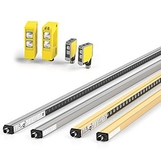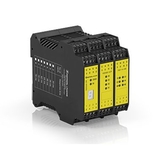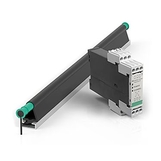Photoelectric safety sensors for personnel safety
Personnel protection is becoming increasingly important in automated processes. Wherever machines perform high-risk movements, the relevant health and safety regulations must be observed. Even if the operator is momentarily distracted, shearing, crushing, and impact injuries must be prevented.
Pepperl+Fuchs offers an extensive range of active photoelectric protective devices that reduce the typical risks associated with machinery and equipment. Together with the appropriate safety control units, active photoelectric protective devices such as safety thru-beam sensors and safety light grids ensure that a stop is applied on detection of unauthorized access or if someone reaches into a danger zone.

Single thru-beam photoelectric sensors are a simple and cost-effective way of securing hazardous areas. Together with a safety control unit, secure single thru-beam photoelectric sensors create a photoelectric protective device, such as Type 2 or Type 4 in accordance with EN ISO IEC 61496. The SL and SLA series are available in different designs and sensing ranges.
Multi-ray photoelectric sensors define a protection field of a certain height and width. They are based on the principle of the thru-beam sensor. The protection field, which is created from red or infrared modulated light beams, is evaluated by a receiver unit or external control interface unit. These photoelectric safety sensors are often characterized by a high number of beams with a low beam gap, which can lie between 500 mm for dual-beam protection and 14 mm for finger protection.

Safety control units permit the connection and control of machine safety components. Due to its modular design, the SafeBox system can be flexibly configured. Depending on requirements, several components can be connected to one control interface. The SafeBox is suitable for connecting and controlling photoelectric safety sensors, mechanical protective devices, and safety switches.

A Safety edge can be used wherever moving edges pose a risk. The safety edge is a rubber profile, which deforms under pressure and triggers a safe stop via the associated control interface unit. Pressure-sensitive safety edges can reduce risks at hazardous points up to Performance Level 'e' in accordance with EN ISO 13849-1.







 +65 6779 9091
+65 6779 9091